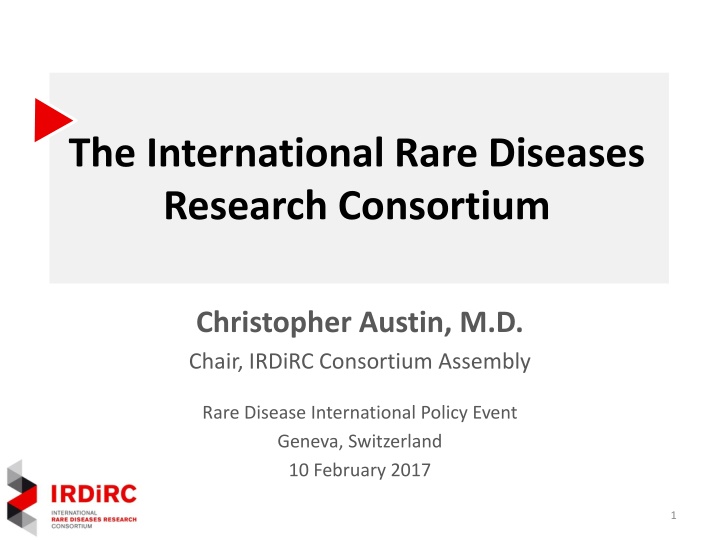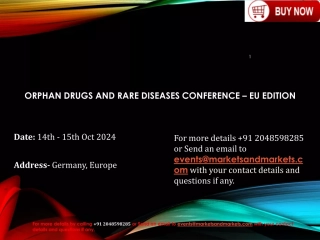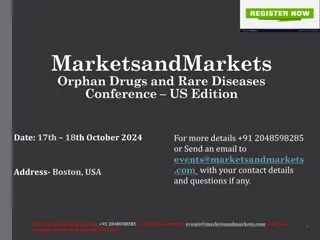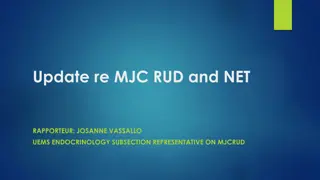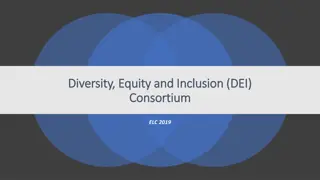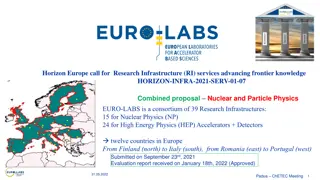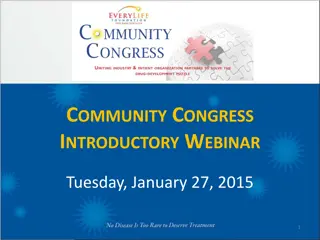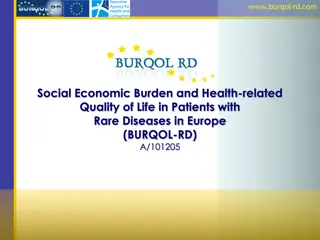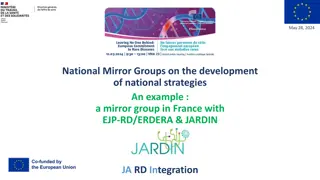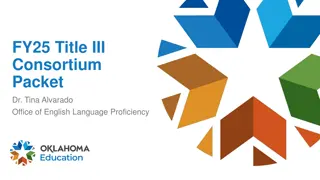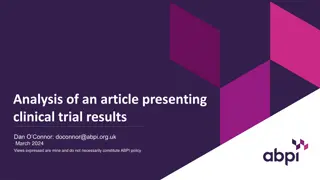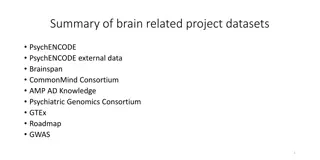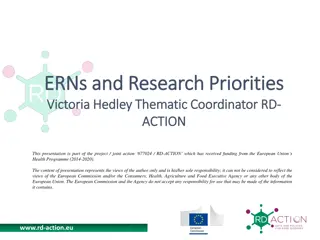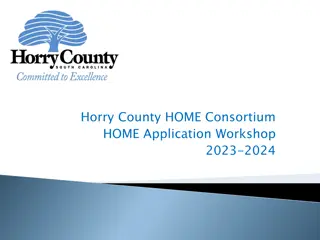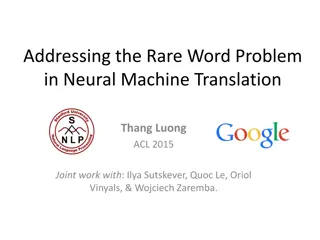International Rare Diseases Research Consortium (IRDiRC) Overview
The International Rare Diseases Research Consortium (IRDiRC) promotes global coordination, cooperation, and research efforts to advance therapies and improve diagnosis for rare diseases. Established in 2011, IRDiRC has made significant progress towards its objectives and continues to evolve. Learn about IRDiRC's history, structure, and consortium assembly members.
Download Presentation

Please find below an Image/Link to download the presentation.
The content on the website is provided AS IS for your information and personal use only. It may not be sold, licensed, or shared on other websites without obtaining consent from the author.If you encounter any issues during the download, it is possible that the publisher has removed the file from their server.
You are allowed to download the files provided on this website for personal or commercial use, subject to the condition that they are used lawfully. All files are the property of their respective owners.
The content on the website is provided AS IS for your information and personal use only. It may not be sold, licensed, or shared on other websites without obtaining consent from the author.
E N D
Presentation Transcript
The International Rare Diseases Research Consortium Christopher Austin, M.D. Chair, IRDiRC Consortium Assembly Rare Disease International Policy Event Geneva, Switzerland 10 February 2017 1
International Rare Diseases Research Consortium (IRDiRC) Global coordination and cooperation to stimulate and maximize output of rare disease research efforts Members from Europe, North America, Asia, Australia, Middle East Each funder supports its own research Initial focus on developing common scientific and policy frameworks 2011-2020 objectives: 200 new therapies for rare diseases by 2020 Means to diagnose most rare diseases by 2020 Achieved in 2017 new objectives being formulated 2
IRDiRC History 2009 Idea (Draghia-Akli, Collins) October 2010 IRDiRC announced April 2011 IRDiRC established April 2013 First IRDiRC Conference, Dublin November 2014 Second IRDiRC Conference, Shenzhen February 2017 Third IRDiRC Conference, Paris Chairs April 2011 Dr. Ruxandra Draghia-Akli (European Comission) January 2013 Dr. Paul Lasko (Canadian Inst. of Health Research) February 2016 Dr. Chris Austin (NIH/NCATS) Reykjavik Meeting, Oct 2010 IRDiRC announced 3
IRDiRC Consortium Assembly Western Australia Department of Health European Organisation for Treatment & Research on Cancer, EORTC Canadian Institutes for Health Research Genome Canada BGI Chinese RD Research Consortium WuXi AppTec E-Rare 2 Consortium European Commission Academy of Finland Agence Nationale de la Recherche, ANR Fondation maladies rares French Muscular Dystrophiy Association, AFM Lysogene Children's New Hospitals Management Group Federal Ministry of Education and Research Shire Chiesi Pharmaceuticals Istituto Superiore de Sanita Telethon Foundation Japan Agency for Medical Research and Development, AMED National Institutes of Biomedical Innovation, Health and Nutrition, NIBIOHN Saudi Human Genome Project Netherlands Organisation for Health Research and Devevelopment Korea National Institute of Health National Institute of Health Carlos III, ISCIII Roche National Institute for Health Research Food and Drug Administration, FDA National Cancer Institute, NCI, NIH National Center for Advancing Translational Sciences, NCATS, NIH National Eye Institute, NEI, NIH National Human Genome Research Institute, NHGRI, NIH National Institute of Arthritis and Musculoskeletal and Skin Diseases, NIAMS, NIH National Institute of Child Health and Human Development, NICHD, NIH National Institute of Neurological Disorders and Stroke, NINDS, NIH NKT Therapeutics Pfizer PTC Therapeutics Sanford Research EURORDIS National Organization for Rare Diseases Genetic Alliance 5
IRDiRC Constituency Committees Mission Identify Overlap of priorities/activities and gaps within each constituency space Common roadblocks across constituency space worldwide Other people within the constituency space who would benefit the committee Use this information to Determine next Goals for IRDiRC Identify how the constituency will contribute to the new set of Goals Create Task Forces and work plans to address priorities/gaps 6
IRDiRC Constituency Committees Chairs Funders Chair: Daria Julkowska, ANR/E-Rare Co-Chair: Hugh Dawkins, Health Department of Western Australia Patients Advocates Chair: Sharon Terry, Genetic Alliance Co-Chair: B atrice de Montleau, EURORDIS Companies Chair: David Thompson, Shire 7
IRDiRC Scientific Committees Mission Establishment, agreement, and promulgation of best practices, operating procedures, quality standards, roadmap to reach IRDiRC goals in their scientific area Implement Task Forces and work plans to address priorities/gaps Inform Constituency Committees of scientific states across the three Scientific Committee areas of responsibility, opportunities, emerging issues Representation across constituencies 8
IRDiRC Scientific Committees Chairs Diagnostics Chair: Kym Boycott, Children s Hospital of Eastern Ontario, Canada Co-Chair: Gareth Baynam, Health Department of Western Australia Foundational (aka, Interdisciplinary) Chair: Hanns Lochm ller, University of Newcastle, UK Co-Chair: Petra Kaufmann, National Center for Advancing Translational Sciences (NCATS), NIH, US Therapies Chair: Diego Ardig , Chiesi Pharmaceuticals, Italy 9
Creation of New IRDiRC Goals, 2017-2027 Background IRDiRC original Goals 2011-2020 Contribute to the development of 200 new therapies Means to diagnose most RDs After only 6 years: These initial objectives have been largely achieved Provides need/opportunity to establish new Goals for next decade Being formulated via a broadly consultative process beginning July 2016, discussed in detail at IRDiRC member meeting 6-7 Feb, at IRDiRC 3rdInternational Conference 8-9 Feb 2017; will be finalized and published in April 10
IRDiRC Planning Committee International Representation Chris Austin (NIH/NCATS) Ruxandra Draghia-Akli (EC) Jeff Schloss & Lu Wang (NIH/NHGRI) Hanns Lochm ller (Newcastle U) Daria Julkowska (ANR/E-Rare) Ana Rath (INSERM) Makoto Suematsu (AMED) Carlo Incerti (Genzyme) Sharon Terry (Genetic Alliance) Yann Le Cam (EURORDIS) Kym Boycott (Children s Hospital Eastern Ontario) Hugh Dawkins (Health Dept of Western Australia) 11
Our Mission: Transformation, not Incrementalism Scale of problems in RD research necessitate changes that will bring about exponential improvement Diagnostic odyssey remains the norm even for well known RDs, leading to lost quantity and quality of life, enormous costs 6000 untreatable RDs, ~3 have first treatment approved/yr => 2000 years for all RD to be treatable Access is low and costs are high: cost of diagnostic odyssey + lack of treatments + cost of new treatments: unsustainable . If we magically had treatments for all RDs today, and treated all affected patients @ cost $200K/yr => GDP (US) 12
Our Mission: Transformation, not Incrementalism But radically more efficient and effective paradigms have been developed and demonstrated The common factor in all of these radical improvements: SHARING of knowledge of data of infrastructure of expertise of viewpoints 13
IRDiRC Goals 2017-2027 Draft overarching Vision Enable all people living with a rare disease to receive diagnosis, care, and therapy within one year of coming to subspecialty medical attention 14
For more information http://www.irdirc.org/ Secretariat: Lilian Lau, lilian.lau@irdirc.org Chair: Christopher Austin, austinc@mail.nih.gov Co-Chair: Hugh Dawkins, hugh.dawkins@health.wa.gov.au 15
